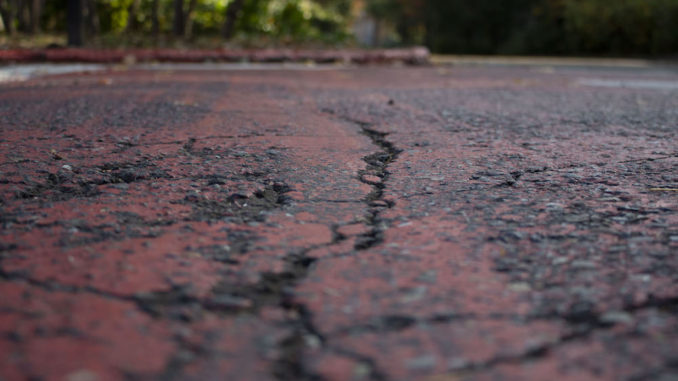
By Grace Mark
October 18, 10:18 a.m: the campus was completely still as students and faculty paid little mind to the annual earthquake drill, the Great Oregon Shakeout, that was meant to occur at that moment.
The Pacific Northwest lies on the Cascadia Subduction Zone (CSZ), a tectonic plate boundary which causes magnitude 9+ earthquakes when rocks slip past each other along the fault. Geologists began to fully realize about 30 years ago that our region is subject to these giant earthquakes and resulting tsunamis and created a geological record to track these major events over the past 10,000 years.
Kathryn Schulz’s 2015 New Yorker article, “The Really Big One,” talked about how this earthquake and resulting tsunami is imminent and will be devastating. The article spread awareness, but also confusion, about the nature of this phenomenon. Because it has been longer than average since the last major earthquake along the CSZ, many think we are “overdue” for the next one. In fact, the next event could occur as soon as tomorrow, but it may also be 500 years from now. So no, we are not quite “overdue” for a 9+ earthquake, but it could still happen at any point.
So why are we apathetic and underprepared?
Deep-seated apathy plays a central role in people’s lack of disaster preparedness. On a college campus, people come from different geographical regions and thus their level of concern for and awareness of disasters varies. Indifference can come from the belief that natural disasters will not happen to us due to the relatively low probability of them. Conversely, previous experiences with natural disasters lead to this indifference as well. Since they have survived previous disasters, people take inadequate precautions for the next one.
This danger is also not a part of our collective consciousness. Public perception becomes our shared “reality.” If people are in general not concerned, the public’s perception of the risk is minimal. Previous warnings that proved to be false lead to a lack of concern for disaster warnings. Because it still has not happened, the event has become background noise that we do not pay attention to.
Further, apathy comes from the fact that disaster preparedness is not an exciting concern — if you are not a geologist, there is little to be passionate about. Other issues seem more relevant and pressing than an event that you could potentially be anticipating for the next 50 years. It is just not a high priority for most.
We also often have the belief that the community is prepared. However, Portland’s infrastructure developed mostly in the absence of this earthquake awareness, so it predates good seismic codes and much will be damaged.
We need to stop denying the possibility that a disaster could occur or that there is nothing we can do about it and take preparation seriously.
Professor Liz Safran discussed the importance of preparedness in our current state of awareness.
“During this period where we have the knowledge but the infrastructure’s not ready, then it becomes super important for communities and individuals to be prepared,” Safran said. “The emergency management community, especially here in Portland and the Pacific Northwest, is really pushing hard on community preparedness. The people who are gonna help you are not the emergency responders; they’re your neighbors. They’re right there; they’re gonna be there when it happens.”
Safran emphasizes the fact that we all have unique skills that can become vital resources in the face of such an event, and that acts of contribution such as relaying messages or helping organize resources can benefit one’s psychological soundness in the aftermath of a disaster.
The “Really Big One” could present itself at any time. The best way to balance uncertainty about whether this earthquake will occur soon, or in 500 years, is to be prepared. Engaging in community preparedness initiatives such as the Great Oregon Shakeout is a good place to start.
Subscribe to the Mossy Log Newsletter
Stay up to date with the goings-on at Lewis & Clark! Get the top stories or your favorite section delivered to your inbox whenever we release a new issue.

Leave a Reply